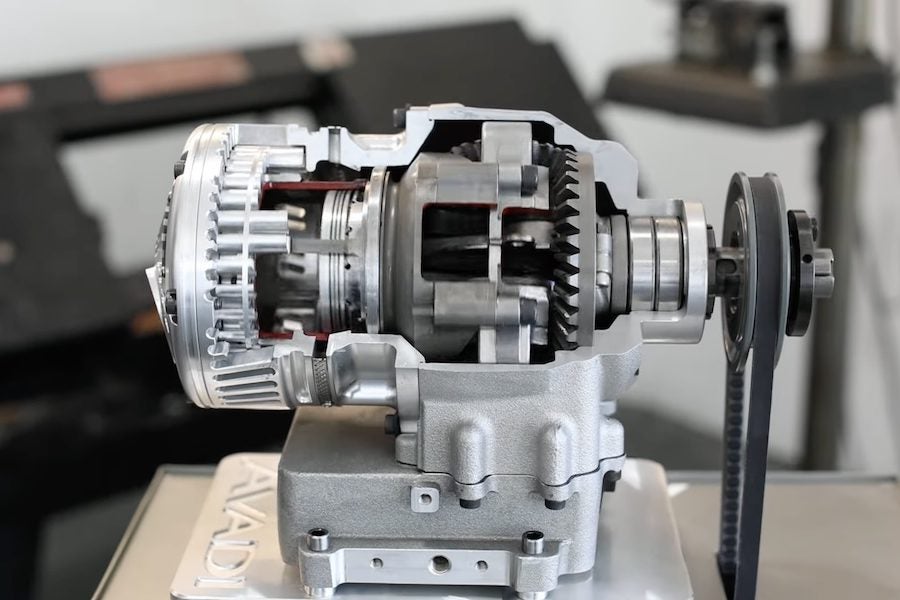With a strong push toward EVs and many places banning internal combustion engines altogether, it seems unlikely that development on this tried-and-true platform will continue. Bucking the trend, the Avadi engine is a revolutionary new design for a 250cc engine with decent power and torque figures that weighs only 24 pounds. It also comes with a twist—literally.
It’s difficult to describe how this engine works in words, so let’s start with this animation. Like most other engines, it consists of a piston moving up and down. A pair of rods connects it to a series of gears resembling an automotive differential, which spins the inner workings, including the output shaft and even the piston itself. As New Atlas reports, the term “rotary engine” would be quite appropriate to apply to this design had it not already been used for the Wankel of the Mazda RX-7 and Suzuki RE5.
This engine weighs so little because most of the standard engine internals have been eliminated. A bit of internet digging through numerous websites tells me that a typical 250 cc motorcycle engine weighs between 50 and 80 lbs, though this also includes the integrated transmission. Still, considering that the latest Honda CRF300L weighs 335 lbs, removing about one-tenth of that weight through a lighter engine design would be quite significant. Its 16 horsepower is less than the Honda’s 23, but the 22 lb-ft of torque beats Honda’s 17, and at just 3,200 RPM. One could make a strong argument that the superior low-end torque of the Avadi engine, its lighter weight, and keeping the center of gravity low in the frame rather than a tall cylinder sticking out the top could make for an excellent off-road motorcycle. Indeed, Avadi themselves list “Developing World Transportation: Two- and Three-Wheeled Motorcycles and Utility Vehicles” as one of this engine’s potential applications.
Is It Real, or Is It Vaporware?
Despite all it has going for it, it doesn’t look like we’ll see the Avadi engine in anything in the near future. The most recent update to Avadi’s blog is from fall 2023. It discusses a significant change in management as CTO Michel Arseneau, who first designed the engine 20 years ago, has stepped down from the role. It also talks about a fundamental flaw in the engine’s valve design. One could speculate whether these two incidents are related. The post goes on with an optimistic view of a new valvetrain design they “intend to be in prototype and testing phase by year end.” As of June 2024, there has been no further update. None of the “contact” or “request info” links on the website work, so we don’t know what the current status is. No news is not typically good news half a year after testing was supposed to be well underway.







